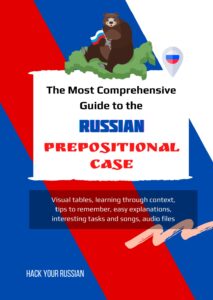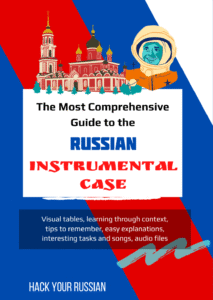Books to learn Russian
Welcome to my collection of books created for learners of Russian at any level.
Here, you’ll find practical guides to understand Russian cases, improve your handwriting, and soon, enjoy reading books with simple stories to build vocabulary and confidence. Each book is designed to make Russian easier, clearer, and more enjoyable — just like learning with a personal tutor. You can find all of them on Amazon.

Russian Accusative Case
The Russian Accusative case changes form based on the noun’s animacy. For inanimate objects, it answers “Что?” (What?) and matches the Nominative case. For animate objects, it answers “Кого?” (Who(m)?) and resembles the Genitive case, depending on gender.

Russian Genitive Case
One of the most challenging and confusing Russian cases is the Genitive case. The Russian Genitive case primarily indicates possession. However, its use extends beyond clear ownership and appears in situations where the connection to possession isn’t always obvious.

Russian Prepositional Case
The Russian Prepositional case is one of the easiest, especially compared to the Genitive and Accusative cases. It’s used only with prepositions, and its endings are limited, making it simple to form. However, knowing when to use it isn’t always straightforward.

Russian Instrumental Case
The Russian Instrumental case indicates the means by which an action is performed, whether it’s a person, object, or thing. In Russian it’s called “твори́тельный паде́ж” from the verb “твори́ть” (to create). It also appears in various less obvious situations.

Russian Dative Case
The Russian Dative case mainly shows the connection between a giver and a recipient, whether physical, emotional, or otherwise. In Russian it is called “да́тельный паде́ж” from the verb “дать” (to give – a perfective form). It’s also used in many less obvious situations, so learning all its functions is important.

Russian Handwriting Worksheets: Learn Russian Cursive
Improve your Russian handwriting with this set of dedicated worksheets. Russian cursive differs significantly from printed letters, making it essential for understanding real handwritten texts. These worksheets offer clear guidance and practical exercises to help you confidently master and memorise cursive in an enjoyable way.